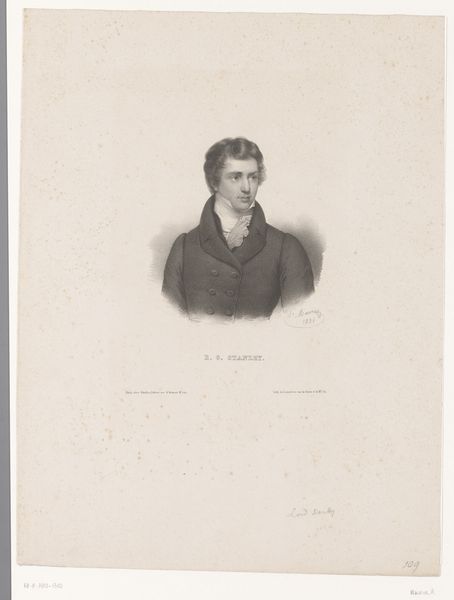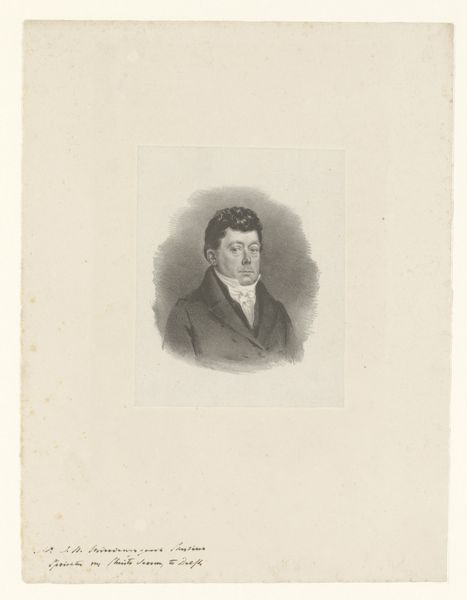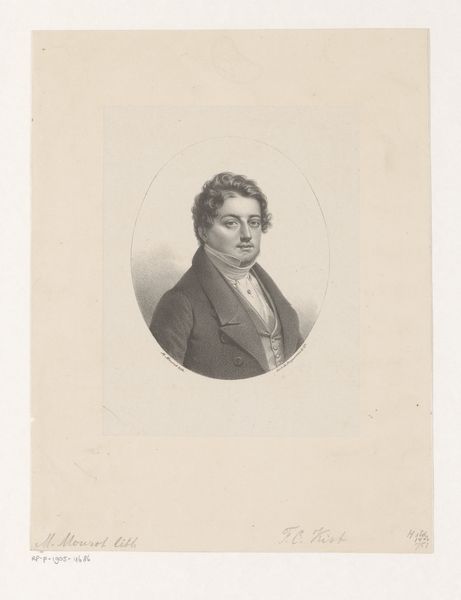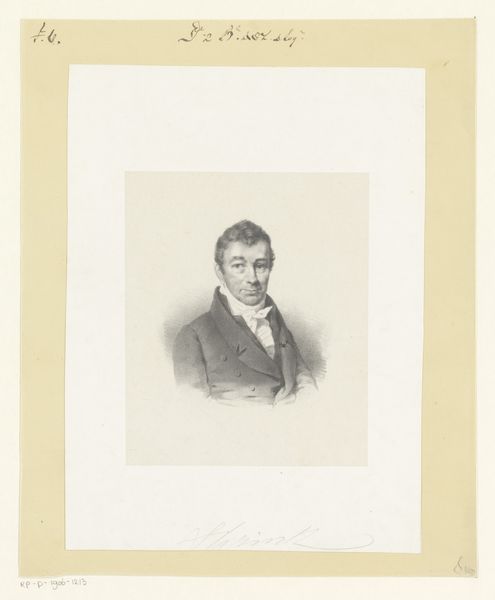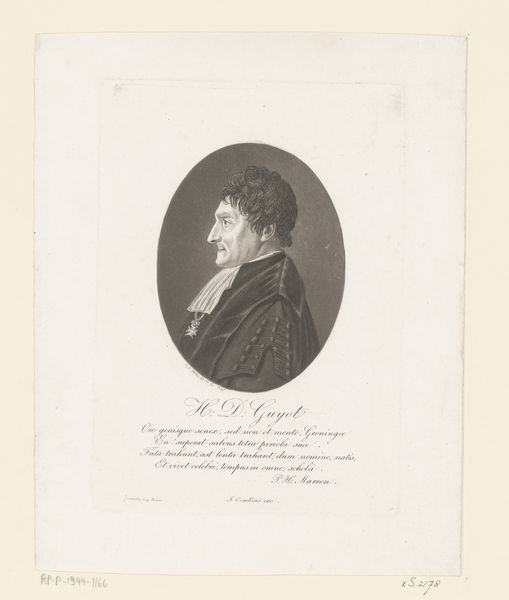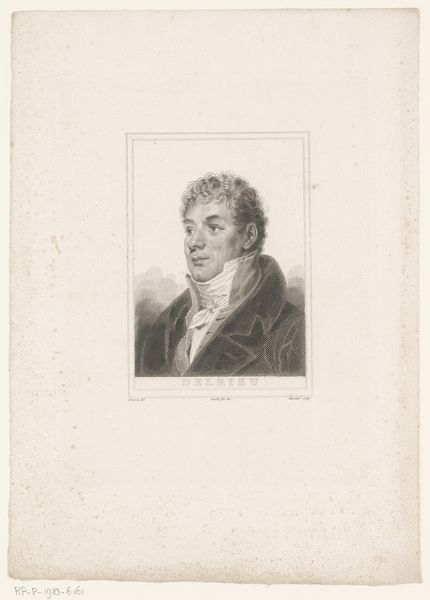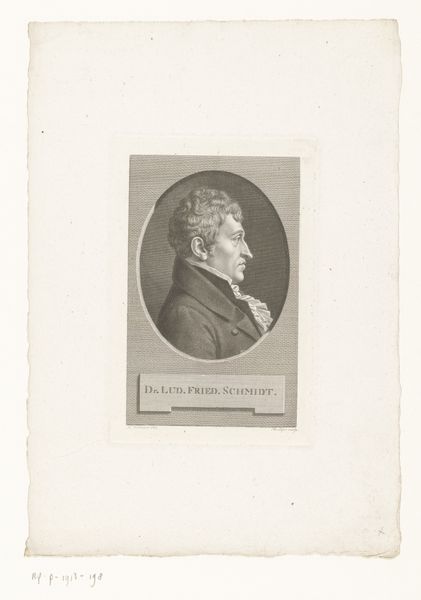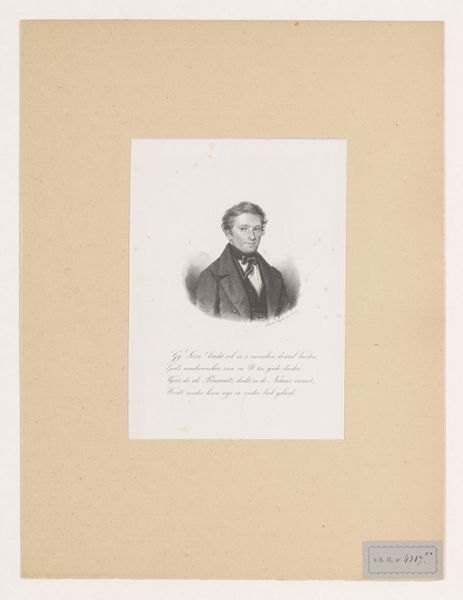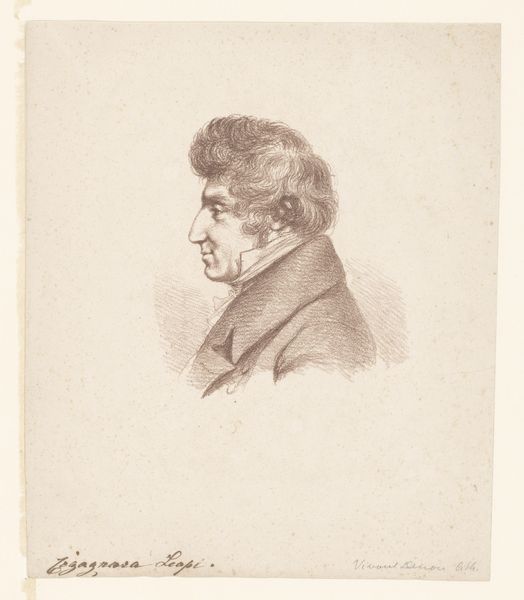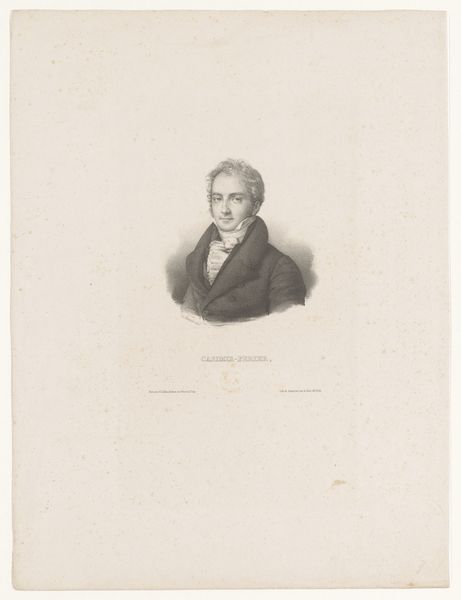
drawing, graphite
#
portrait
#
drawing
#
graphite
#
portrait drawing
#
academic-art
#
realism
Dimensions: height 243 mm, width 185 mm
Copyright: Rijks Museum: Open Domain
Curator: Let's take a moment to observe this graphite drawing, created sometime between 1811 and 1849 by Maria Geertruida de Goeje-Barbiers. It's a portrait, of course, and titled, rather plainly, "Portret van een onbekende man." Editor: Well, "plainly" indeed! My first impression? He looks rather skeptical, doesn't he? A slight downturn to the mouth, the eyebrow cocked just so… Makes me wonder what he's judging. Is it my outfit? Did I spill tea? The shade of off-white on this very gallery wall perhaps? Curator: Portraits such as these were incredibly important during the 19th century. Without photography, portraiture provided crucial visual representations, helping to codify social status and memory. They weren’t just about likeness, but projecting power and ideals. Editor: And yet there's this inherent melancholy to the unknown. He’s well-dressed, yes, perhaps even important. But who was he? What were his dreams? His disappointments? He seems lost in thought, disconnected... I almost wish he could scowl and flip off convention if for only an instant! A time traveler before his time. Curator: Exactly. And the academic style adopted by De Goeje-Barbiers – rooted in realism – emphasized accuracy, but also perpetuated ideals. Think of the portrait as a statement about bourgeois ideals of the era and not only one man's representation. How does an "unknown man" like this fit that history of idealized realism? Editor: Maybe he felt that tension too. The weight of expectation, the burden of upholding appearances… You see it in his eyes, in that almost imperceptible slump of his shoulders. This makes me want to ask "What truths are lost in idealized representations?" I want to disrupt those imposed social orders of history and challenge norms! Curator: That disruption you're seeking is part of the ongoing reevaluation that art historians must consider and conduct, challenging who and what we deem worthy of representation and remembrance. I love the opportunity of these "unknown" images! Editor: That little touch of rebellion there under the surface? That's the spark, isn't it? That’s what brings history—and art—to life for me. Makes him much less an “unknown man,” wouldn't you say?
Comments
No comments
Be the first to comment and join the conversation on the ultimate creative platform.
